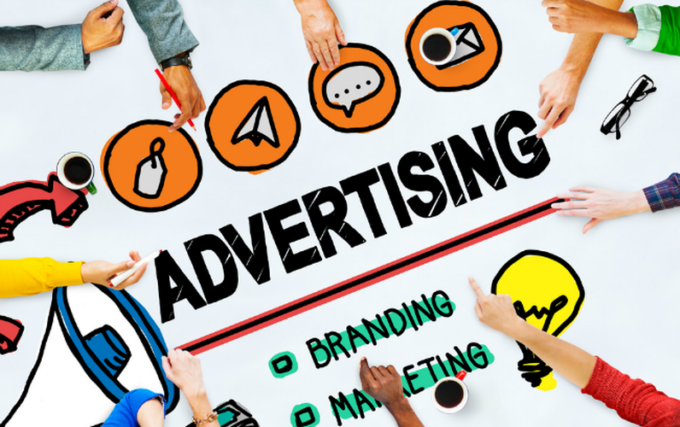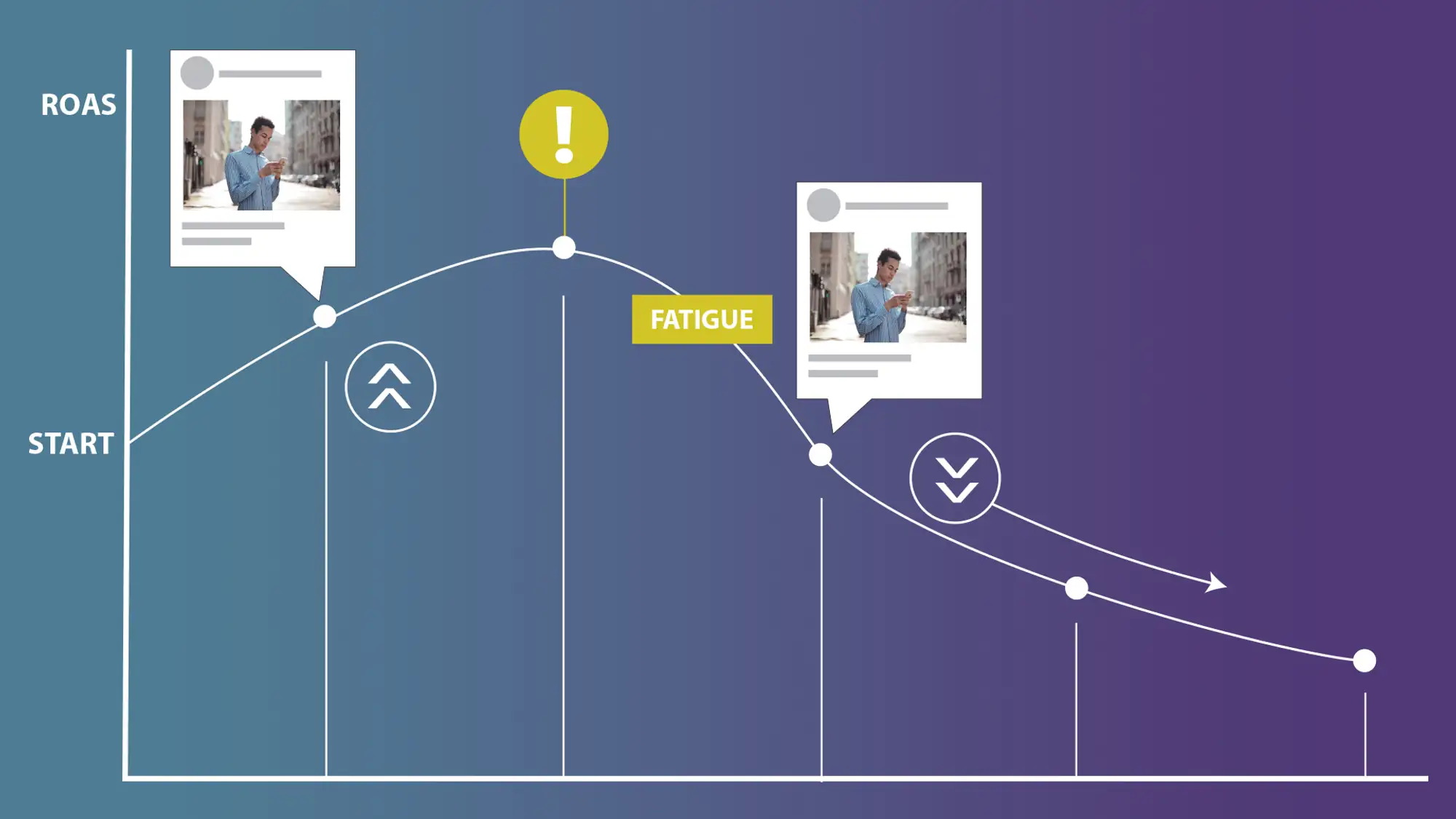Navigating the digital world, no matter how big or small the business, results in one consistent challenge: ad fatigue. It’s a sneaky issue where your ads gradually lose their impact, not because of their quality but simply due to overexposure.
Picture your audience scrolling past your ads, not because they aren’t interested but because they’ve seen them too often. This scenario isn’t just frustrating; it’s costly. Ad fatigue means your investment in digital ads yields diminishing returns, with lower engagement and conversion rates. However, there’s a silver lining – ad fatigue is preventable.
In this comprehensive guide, we will explore five proven methods to refresh your advertising approach and keep your audience engaged. From rotating creatives to sophisticated targeting, these tactics will breathe new life into your campaigns and ensure your ad spend is as effective as ever.
Understanding Ad Fatigue: The What and Why
Ad fatigue occurs when your audience becomes overly familiar with your ads, leading to decreased interest and engagement. This is problematic because it means you’re investing more into ads that are losing effectiveness. Addressing ad fatigue is crucial to maintaining the efficiency of your ad spending and ensuring your messages resonate with your audience. Here are a few tried and true ways to keep your ads fresh and relevant:
1. Rotate Your Ad Creatives Regularly
The regular rotation of ad creatives is a critical strategy in combating ad fatigue. This process involves more than just a superficial refresh; it’s about infusing new life into your ads at consistent intervals.
Think of it as giving your ads a new wardrobe that aligns with your audience’s evolving interests and preferences. This could involve introducing vibrant new images, rewriting ad copy to reflect current trends or promotions, or overhauling the design to offer a fresh perspective.
Introducing new creatives helps prevent your audience from becoming desensitized to your ads. When you update the visuals and messages, you reignite your audience’s curiosity, encouraging them to re-engage with your brand.
It’s also an opportunity to test different creative concepts and styles, which can provide valuable insights into what resonates most effectively with your target audience. Whether through bold color schemes, innovative layouts, or compelling copy, regular updates to your ad creatives can significantly enhance the appeal and effectiveness of your campaigns.
2. Target Different Audience Segments

Effectively targeting different audience segments is key to reducing ad fatigue and enhancing the overall impact of your advertising campaigns. By dividing your audience into distinct groups based on factors like demographics, interests, behaviors, or purchase history, you can create more personalized and relevant ad experiences. This tailored approach ensures that your ads resonate more deeply with each segment, increasing the likelihood of engagement and conversion.
Incorporating audience segmentation into your strategy involves several key steps:
- Identify Unique Audience Characteristics: Analyze your audience data to identify unique characteristics and preferences within different groups.
- Create Tailored Ad Content: Develop ad content that speaks directly to the interests and needs of each segment.
- Use Targeted Messaging: Craft messages that address each audience group’s specific pain points or desires.
- Adjust Ad Placements: Place your ads on platforms and in contexts where they are most likely to be seen and appreciated by each segment.
By avoiding a one-size-fits-all approach and delivering content customized to the unique aspects of each audience segment, you significantly reduce the chance of your ads becoming stale or irrelevant. This strategy not only combats ad fatigue but also strengthens the overall effectiveness of your advertising efforts.
3. Experiment With Different Ad Formats

Embracing a variety of ad formats is a dynamic strategy to keep your audience engaged. Limiting your campaign to a single format can lead to a monotonous experience for your viewers, causing them to lose interest over time. By diversifying your approach with different types of ads, you can pique your audience’s curiosity and maintain their attention.
- Video Ads: Utilize the power of storytelling through video ads. They can convey emotions, showcase products in action, and create a more immersive experience for the viewer.
- Carousel Ads: Carousel ads allow you to showcase multiple images or videos in a single ad unit. They are particularly effective for displaying a range of products or telling a step-by-step story.
- Interactive Ads: Engage your audience with interactive elements. Polls, quizzes, or simple games within ads can increase interaction and make your audience more invested in the content.
- Static Image Ads: Sometimes, simplicity stands out. Crisp, clear, and creative static images can be just as effective, especially when well-designed and visually striking.
Experimenting with these different formats can refresh your campaign and cater to varying preferences within your audience. For instance, some users might engage more deeply with the narrative aspect of video ads, while others might appreciate the control and interaction offered by carousel and interactive formats. By continuously varying your ad formats, you can keep your content fresh and engaging, reducing your audience tuning out.
4. Use Frequency Capping and Ad Scheduling

Frequency capping is a crucial technique in the digital advertiser’s toolkit, especially when combating ad fatigue. It involves limiting the number of times a specific individual is shown your ad over a certain period. Frequency capping aims to strike a delicate balance between ensuring adequate exposure and avoiding bombarding your audience with the same message too often.
By implementing frequency capping, you ensure that your audience doesn’t become desensitized to your ads, which can lead to disinterest or annoyance. This approach maintains the freshness of your campaign and respects the user experience, ultimately fostering a more positive reception of your brand.
Ad scheduling, on the other hand, complements frequency capping by optimizing the timing of your ad displays. This strategy involves analyzing user behavior and preferences to identify the best times for ad placement. For instance, specific times or days of the week might yield higher engagement rates for your target audience.
By scheduling your ads to appear during these peak periods, you capture your audience’s attention when they are most receptive. Ad scheduling helps prevent ad overexposure at less effective times, enhancing the overall efficiency of your campaign and ensuring that each ad impression is as impactful as possible.
5. Monitor and Analyze Ad Performance Regularly

Consistent monitoring and detailed analysis of your ad performance play a pivotal role in preventing ad fatigue. This ongoing process involves closely monitoring critical metrics such as click-through rates (CTRs), engagement rates, and conversion rates. These indicators offer a wealth of insights about how your audience interacts with your ads.
For instance, a decline in CTR might signal that your audience is beginning to overlook your ads, suggesting the onset of ad fatigue. Similarly, changes in engagement rates can indicate whether your content is still resonating with your audience or has become stale.
Regular analysis extends beyond tracking basic metrics. It involves going into the nuances of your ad performance over time. Are certain ad creatives or formats maintaining their effectiveness? How are different segments of your audience responding over various campaign phases?
This level of scrutiny allows you to identify patterns and trends, providing an opportunity to make informed decisions about your advertising strategy. When signs of ad fatigue are detected, you can swiftly implement changes – whether it’s introducing new creatives, adjusting targeting parameters, or experimenting with different ad formats.
Timely adjustments based on performance data ensure that your campaigns remain fresh, relevant, and compelling, maximizing their impact and engaging your audience.
Wrapping Up: Revitalize Your Ads and Beat Ad Fatigue
By implementing these five strategies, you can effectively combat ad fatigue, ensuring your campaigns remain fresh and continue to engage your audience effectively. For more comprehensive digital marketing solutions, consider exploring additional resources and expert guidance to optimize your advertising efforts.











